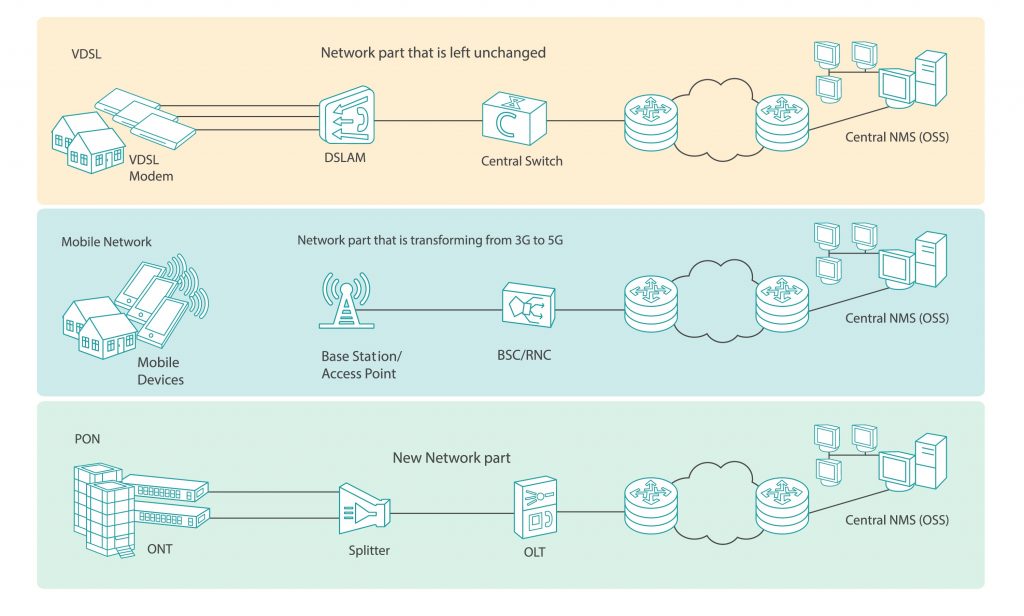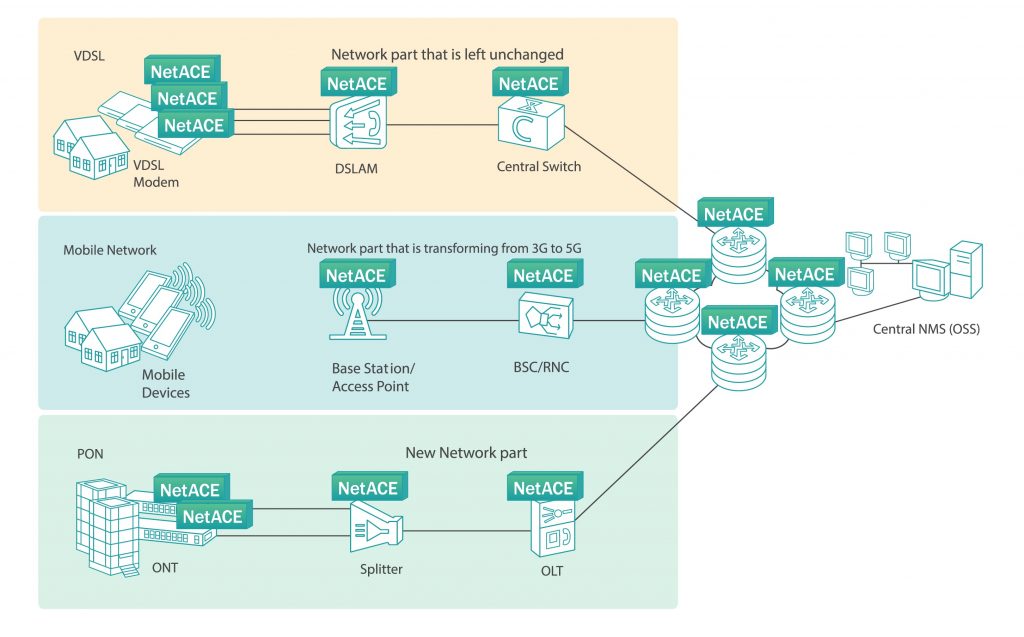

The technology advances and introduction of new services is pushing service providers to be in constant digital transformation mode, in order to stay ahead of the game. Many service providers are using system integrators to assist them with the digital transition. The transition is usually divided into several phases including mapping current network assets and services to decide which part is going to stay as before, and which will go through the transformation. There are also parts of the network or services that are added to the current network as part of the transition. The entire new structure and configuration has to be managed from a single unified network management system, even if the network includes elements from multiple vendors and different technologies.
The system integrator method of mapping current network assets is usually manual and requires intensive human labor to gather information about every network element and service – including device model, manufacturer, different ports and connections, settings, ports available and more. The information gathered is stored in various alternatives like Excel files. It is very difficult to understand from these records the complete end-to-end network structure and how services are connected across the network. As for managing the different parts of the network – those staying as is, those transforming and those just added – the current way of handling management and provisioning is usually via multiple management systems, each handling a specific technology or vendor equipment.

The NetACE approach to digital transformation is to automate the process of the network discovery and provide unified, agnostic network management and provisioning for the entire network. For many system integrators, this approach can mean the difference between win or lose for digital transformation projects. The major part of the economic calculation for a digital transformation project is the labor required for network mapping. This part is no longer relevant with NetACE – since network discovery for network elements, the way they are connected and the services running on them is automatic. The automation of the discovery process lowers cost, eliminates human error, and provides an intuitive presentation of the end-to-end network structure. The next phase of replacing some of the network elements is done efficiently with NetACE, as most of the new devices are already supported and if not, can be added in a matter of days. This means that the new device settings and services can be configured by NetACE to match the transformed network – ensuring error-free transition. For the final part of setting up network management for the transformed network, NetACE manages, configures and maintains every network element regardless of vendor or location. This allows the service provider a complete overview of the network and the ability to easily set or change any service across the network at the click of a button.

NetACE is a vendor-agnostic solution that allows unified monitoring and control over a multi-vendor network in a global multi-site topology. NetACE has a built-in automated system that discovers all network elements and the topology that connects them. Once the system topology is discovered, the system allows monitoring and control over any element in the system, regardless of vendor. Communication uses standard management protocols adapted to the protocol that the specific equipment supports. Any change, configuration setting, unit or service activation or replacement of a faulty unit can be done remotely. Activation and control is via user-friendly monitoring systems that allow activation at a click of a button.